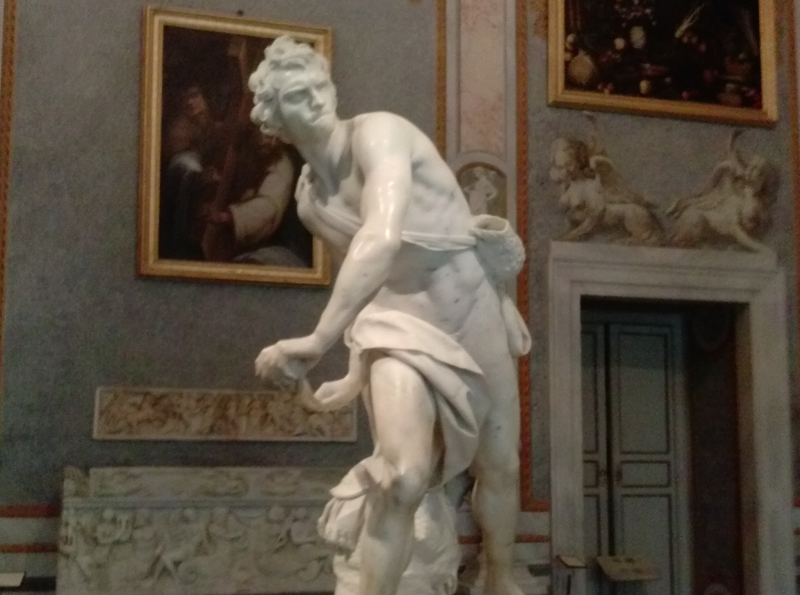My diary
This statue of David was sculptured by Gian Lorenzo Bernini in 1623-1624 AD. This marble sculpture can be found at the Galleria Borghese in Rome, Italy. Unlike other statues of David, this one is showing more than just beauty, it’s drastically focusing on both realism and emotion. If one looks closely, he or she can see that this David has veins on his arms and legs, showing physical strength in a way that hasn’t been shown before. If one looks even closer, one can also see dramatic determination that appears on David’s face, showing that he is ready to shoot his slingshot at Goliath’s head and defeat him. It has also been told that Bernini decided to sculpt his face as David as well, making it a self-portrait.
This statue is not just significant because of its beauty and the story of David. It was because Bernini helped start the Baroque movement in art during the Renaissance period. This movement was the use of a particular art style that expressed exaggerated emotion in art, particularly involving the church. It was highly popular among the Catholic Church, and it spread drastically throughout Europe.
Artifact #9, Bernini's David
januari 20, 2015
|
Rome, Italy
This statue of David was sculptured by Gian Lorenzo Bernini in 1623-1624 AD. This marble sculpture can be found at the Galleria Borghese in Rome, Italy. Unlike other statues of David, this one is showing more than just beauty, it’s drastically focusing on both realism and emotion. If one looks closely, he or she can see that this David has veins on his arms and legs, showing physical strength in a way that hasn’t been shown before. If one looks even closer, one can also see dramatic determination that appears on David’s face, showing that he is ready to shoot his slingshot at Goliath’s head and defeat him. It has also been told that Bernini decided to sculpt his face as David as well, making it a self-portrait.
This statue is not just significant because of its beauty and the story of David. It was because Bernini helped start the Baroque movement in art during the Renaissance period. This movement was the use of a particular art style that expressed exaggerated emotion in art, particularly involving the church. It was highly popular among the Catholic Church, and it spread drastically throughout Europe.

Maak je eigen dagboek
Voeg eenvoudig verhalen toe aan je dagboek in onze online editor of app
Voeg je afbeeldingen toe en kies je pagina-indelingen
Deel je reis in realtime zonder gedoe!